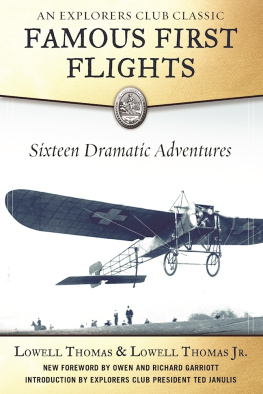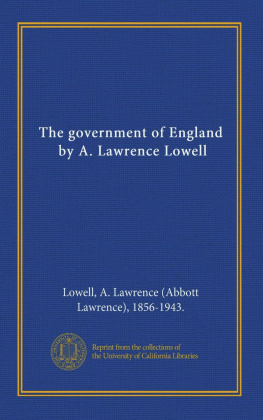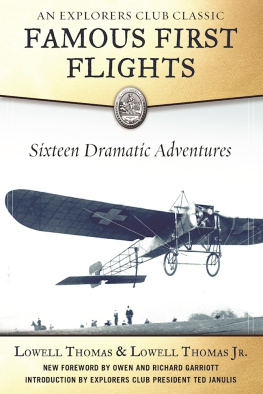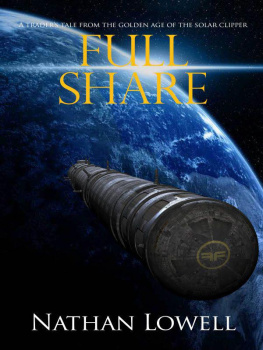Lowell Thomas - Famous First Flights
Here you can read online Lowell Thomas - Famous First Flights full text of the book (entire story) in english for free. Download pdf and epub, get meaning, cover and reviews about this ebook. year: 2016, publisher: Skyhorse Publishing, genre: Non-fiction. Description of the work, (preface) as well as reviews are available. Best literature library LitArk.com created for fans of good reading and offers a wide selection of genres:
Romance novel
Science fiction
Adventure
Detective
Science
History
Home and family
Prose
Art
Politics
Computer
Non-fiction
Religion
Business
Children
Humor
Choose a favorite category and find really read worthwhile books. Enjoy immersion in the world of imagination, feel the emotions of the characters or learn something new for yourself, make an fascinating discovery.
- Book:Famous First Flights
- Author:
- Publisher:Skyhorse Publishing
- Genre:
- Year:2016
- Rating:5 / 5
- Favourites:Add to favourites
- Your mark:
- 100
- 1
- 2
- 3
- 4
- 5
Famous First Flights: summary, description and annotation
We offer to read an annotation, description, summary or preface (depends on what the author of the book "Famous First Flights" wrote himself). If you haven't found the necessary information about the book — write in the comments, we will try to find it.
Famous First Flights — read online for free the complete book (whole text) full work
Below is the text of the book, divided by pages. System saving the place of the last page read, allows you to conveniently read the book "Famous First Flights" online for free, without having to search again every time where you left off. Put a bookmark, and you can go to the page where you finished reading at any time.
Font size:
Interval:
Bookmark:

Copyright 1968 by Lowell Thomas and Lowell Thomas Jr.
Foreword copyright 2004 by Buzz Aldrin
Foreword copyright 2016 by Richard and Owen Garriott
Introduction copyright 2016 by Ted Janulis
First Skyhorse Publishing edition copyright 2016
All rights reserved. No part of this book may be reproduced in any manner without the express written consent of the publisher, except in the case of brief excerpts in critical reviews or articles. All inquiries should be addressed to Skyhorse Publishing, 307 West 36th Street, 11th Floor, New York, NY 10018.
Skyhorse Publishing books may be purchased in bulk at special discounts for sales promotion, corporate gifts, fund-raising, or educational purposes. Special editions can also be created to specifications. For details, contact the Special Sales Department, Skyhorse Publishing, 307 West 36th Street, 11th Floor, New York, NY 10018 or .
Skyhorse and Skyhorse Publishing are registered trademarks of Skyhorse Publishing, Inc., a Delaware corporation.
Visit our website at www.skyhorsepublishing.com.
10 9 8 7 6 5 4 3 2 1
Library of Congress Cataloging-in-Publication Data is available on file.
Cover design by Tom Lau
Cover photo credit: Oskar Biders 1913 flight to Bern, courtesy of the
Bernisches Historiches Museum
Print ISBN: 978-1-5107-1106-8
Ebook ISBN: 978-1-5107-1107-5
Printed in the United States of America

Just as the famous first flights described by Lowell Thomas and Lowell Thomas Jr., gripped the imagination of people around the world, mankinds first forays into space were nothing less than spellbinding to men, women, and children everywhere. How could they not be riveted by these real-life adventures, which had previously been the stuff of science fiction?
It all began on October 4, 1957, when a 184-pound satellite named Sputnik 1 became the first man-made object ever to orbit the earth. The Soviet Unions aluminum sphere spent three months circling our planet, transmitting radio signals that were analyzed to gather data about the upper atmosphere. But Sputnik 1s importance was less scientific than symbolic. The Cold War was fully raging in 1957, and the launch of this satellite was nothing less than the space shot heard round the world. The Space Race between the United States and the USSR was on.
The Soviet Union got off to a fast start, leaving the United States to eat the dust of the Communist nations R-7 rockets. In 1959, the USSRs Luna 1 and Luna 2 satellites made history as the first man-made objects to orbit the sun and impact the moon, respectively. The significance of these successes was obvious and powerful: Suddenly, other heavenly bodies were within our reach.
On April 12, 1961, the Soviets achieved another enormous milestone with the launch of Vostok 1 . Inside the capsule was cosmonaut Yuri Gagarin, the first man in space and the first to orbit the earth, a feat he completed a grand total of one time during the missions 118-minute duration. Brief as it was, Vostok 1s importance could not be underestimated: Mankind was capable of traveling in space. (Gagarins success would not have been possible without the sacrifice of a stray dog from the streets of Moscow named Laika, who three-and-a-half years earlier had been carried into orbit on Sputnik 2 , showing the world that a living organism could survive in a capsule in space.)
Alan Shepherds suborbital flight on May 5, 1961, made him the first American in space; and nine months later, on February 20, 1962, John Glenn wrote his name in the history books as the first American to orbit the earth, aboard Friendship 7 . Despite these successes, the United States was still playing catch-up.
Less than four months after Glenns mission, Soviet cosmonaut Valentina Tereshkova became the first woman in space on June 16, 1963. A textile worker and amateur parachutist, Tereshkova orbited the earth a then-record forty-eight times during the three-day flight aboard Vostok 6 . It would be another twenty years before the United States put its first woman, astronaut Sally Ride, in orbit.
In March 1965, the USSR achieved yet another first, when cosmonaut Alexei Leonov made the first walk in space from Voskhod 2 . But Soviet supremacy proved short-lived. By the end of the year, Gemini 7 , with Frank Borman and James A. Lovell Jr., aboard, stayed in space for nearly fourteen days, doubling the previous duration record. The success of Gemini 7 meant that a manned mission to the moon was possible.
As the Soviets increasingly focused on unmanned probes to the moon and Venus in 1966 and 1967, the United States labored to fulfill the challenge made by John F. Kennedy in 1961 and send a man to the moon by the end of the decade. In December 1968, Apollo 8 , with Frank Borman, James A. Lovell Jr., and William Anders at the controls, became the first manned spacecraft to orbit the moon. The stage was set for a mission that The New York Times described as more than a step in history; it is a step in evolution.
That mission, of course, was Apollo 11 , which famously marked the first soft landing on the moon and the first moonwalks by Neil Armstrong and myself. The date was July 20, 1969, and the largest audience in television history witnessed the first time human beings had ever set foot on another world. American supremacy in space was now unquestioned. More significantly, science fiction had become science fact. A new era had been born.
Following Apollo 11 into the early 1970s, subsequent Apollo missions brought two-wheeled carts, moon rovers, and ten more astronauts to the surface of our nearest heavenly neighbor. Unmanned missions in the same decade also broke new interplanetary ground and yielded important scientific results: In 1971, Mariner 9 became the first spacecraft to orbit another planet and went on to map, for the first time, the entire surface of Mars; the United States successfully landed two probes, Viking 1 and Viking 2 , on the red planet in 1976, and each broadcast a steady stream of pictures of the Martian surface; and in 1979, Pioneer 11 reached Saturn and took the first close-up photographs of the ringed planet.
In 1981, the launch of the first American space shuttle, Columbia , ushered in an era when a series of reusable reentry vehicles, both American and Soviet, captured the headlines. In 1990, one such shuttle, Discovery , deployed the Edwin P. Hubble Space Telescope, which, after some minor adjustments, revolutionized deep space astronomy for more than a decade.
The new millennium has brought with it new milestones in unmanned exploration. In 2004, the Mars lander Opportunity found, for the first time, evidence of water on the surface of the red planet. The discovery of life (or signs of earlier biological activity) is now a distinct possibility there.
And what famous first flights can we expect in the future? How about an extended lunar mission that creates the first colony of humans on the moon, made possible by a new, heavy-lift space launch system capable of sending a crew of eight astronauts into interplanetary space. If this expedition is a success, a manned mission to Mars is likely within thirty to forty years.
The fiction of Jules Verne has been turned into scientific reality in less than one hundred fifty years.
The future of space exploration is limited only by our ability to imagine.
Dr. Buzz Aldrin
Apollo 11 Astronaut
Next pageFont size:
Interval:
Bookmark:
Similar books «Famous First Flights»
Look at similar books to Famous First Flights. We have selected literature similar in name and meaning in the hope of providing readers with more options to find new, interesting, not yet read works.
Discussion, reviews of the book Famous First Flights and just readers' own opinions. Leave your comments, write what you think about the work, its meaning or the main characters. Specify what exactly you liked and what you didn't like, and why you think so.

